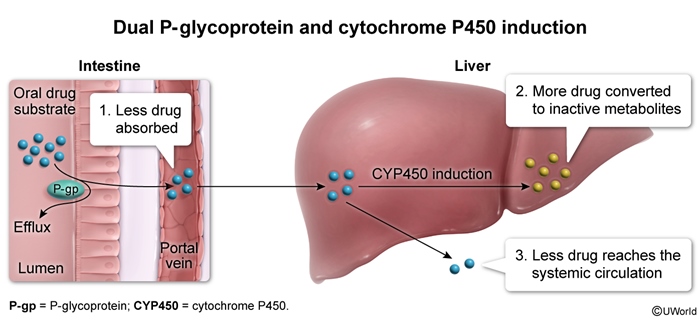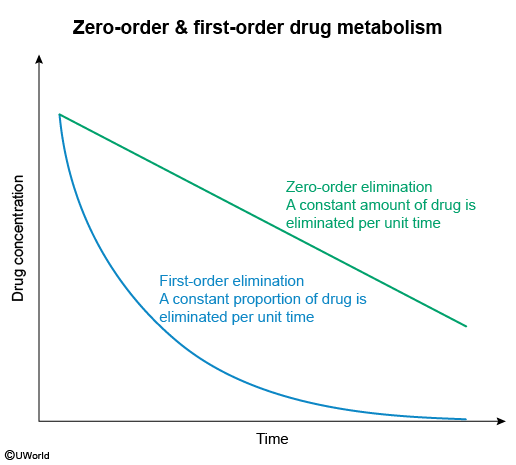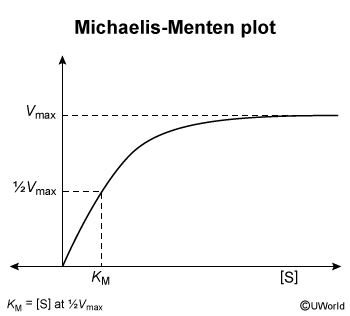Pharmacokinetics
Article Sections
Introduction
Pharmacokinetics is the study of what the human body does to a drug during the processes of drug absorption, distribution, metabolism, and excretion (often abbreviated ADME). Mathematical relationships describing these processes can be used to assess drug levels and optimize drug therapy.
Pharmacodynamics, what the drug does to the human body, refers to the relationship between the drug concentration at the site of action and its therapeutic and adverse effects. This concept is discussed in more detail in a separate article.
Absorption
When a drug is given intravascularly (eg, intravenous [IV] or intraarterial), absorption is not required because the drug enters directly into the bloodstream (systemic circulation). If a drug is administered extravascularly, drug absorption occurs as the drug moves from the site of administration into the bloodstream. Extravascular routes of administration include oral (PO), sublingual (SL), buccal, intramuscular (IM), subcutaneous (SC), transdermal, inhaled, topical, ocular, intraocular, intrathecal (IT), and rectal (PR).
Continue Learning with UWorld
Get the full Pharmacokinetics article plus rich visuals, real-world cases, and in-depth insights from medical experts, all available through the UWorld Medical Library.
Figures



